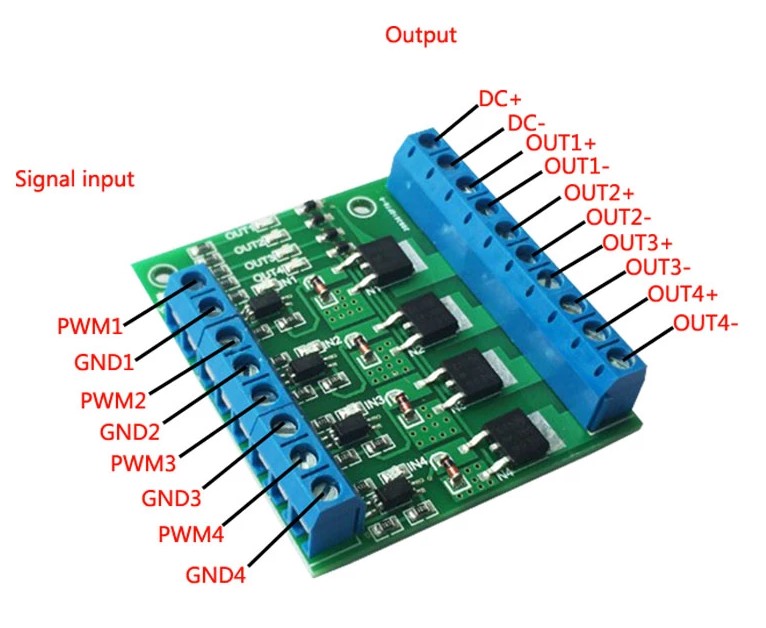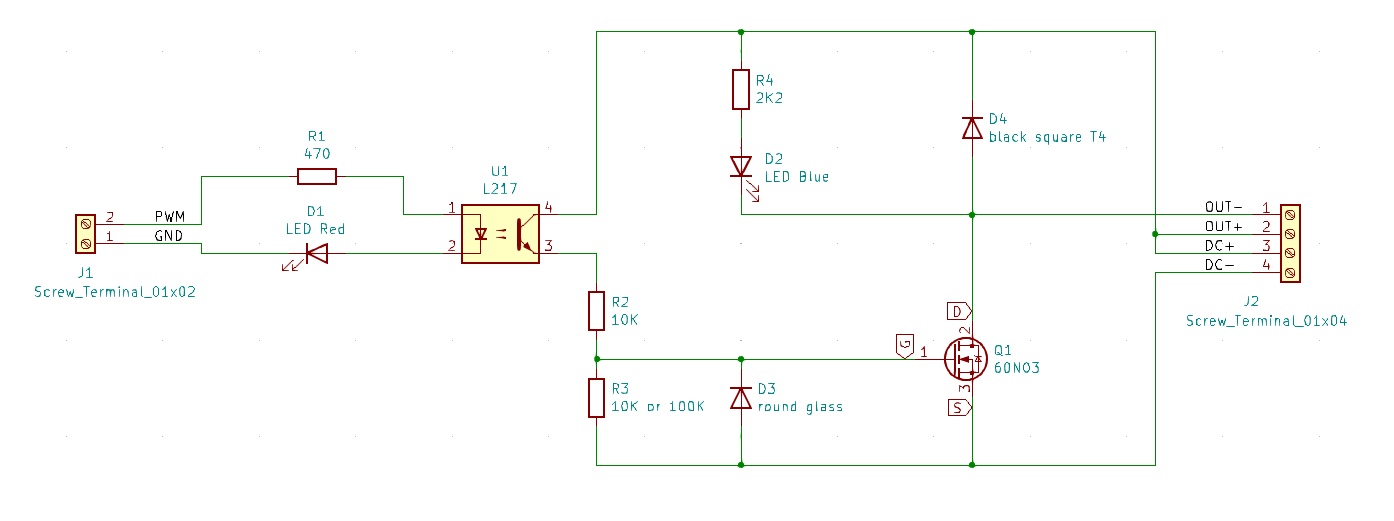
The YYNMOS-1
Supplier description
- Model: YYNMOS-1
- Input and output are completely isolated
- Input Signal: 3-20V PWM signal
- Output Capacity: DC 3.7-27V, and the current is within 10A
- PWM Frequency: 0-20KHz
Application
The output port can control high power devices, such as motors, lamps, LED lamp strings, DC motors, micro water pumps, electromagnet valves; it can input PWM to control motor rotate speed and the brightness of a lamp.
The YYNMOS-1 module is described here and has one channel. There exists also a YYNMOS-4 module, which is a four-channel version.

The YYNMOS-4
Interface Introduction
| Pin | Specification |
|---|---|
| DC+ | The positive pole of the device's DC power supply |
| DC- | The negative pole of the device's DC power supply |
| PWM | Signal input positive terminal (connects to MCU IO ports, PLC interface) |
| GND | signal input negative terminal |
| OUT+ | Positive output terminal (connects to the positive pole of the device) |
| OUT- | Negative output terminal (connects to the negative pole of the device) |

Reverse engineered schema of the module.
About D4: The square black diode is probably a 1N4148WT. It is marked "T4".
About D3: The glass diode is probably a ZMM5248B-7, which is a 18V Zener diode. It protects the gate of the FET against negative voltages and also against positive voltages above 18V.
About R1: the module in the picture has a value of 470Ω, the one I bought has 2K2. Due to this high value, the module does not work when connected to a NodeMCU pin, which works with 3.3 Volt. Initially, I tried to get it working by shorting the LED D1, but that did not help enough. So, I replaced the resistor with one of 470 Ohm, and that solved the problem.
About R3: the module in the picture has a value of 100K, the one I bought has 10K (which is not so good).


Product application example

Layout and connections

